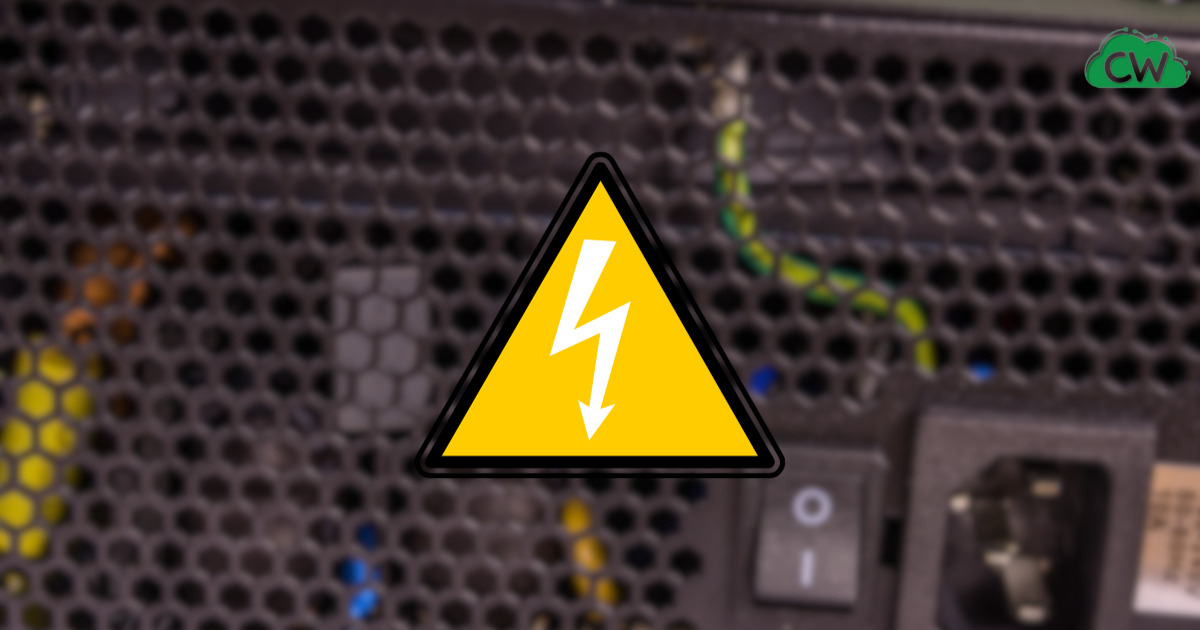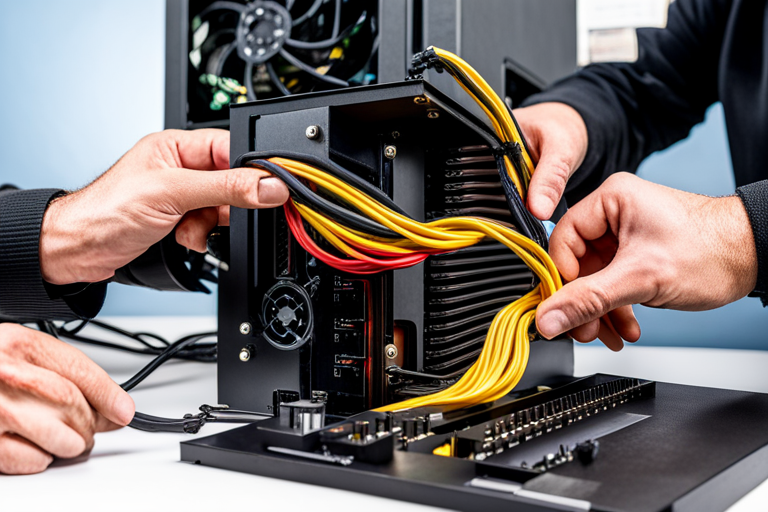How to Check Power Supply Wattage Without Opening PC?

Understanding the wattage and specifications of your power supply is crucial for maintaining your computer’s stability and performance.
In this detailed guide, I will explore different methods for checking the power supply wattage without the need to physically open the computer case.
We will discuss the use of software tools, accessing the manufacturer’s website, and other non-invasive methods to obtain accurate power supply information.
How to Check Power Supply Wattage Without Opening PC?
Here are some steps which you can do if you want to check the PSU voltage qithout opening your computer or pc.
- Use software tools like CPU-Z, HWiNFO, Speccy, AIDA64, or Open Hardware Monitor.
- Check the manufacturer’s website with your PC or motherboard model.
- Inspect labels or stickers on the PC case.
- Contact the manufacturer’s support team.
Now below im going indepth on the full process just to give you a clear idea.
Using Software Tools to Check Power Supply Wattage
When it comes to checking power supply wattage without opening your PC, software tools offer a convenient and non-invasive solution.
These tools interact with your computer’s hardware to provide detailed system information, including the power supply wattage.
Here, I will introduce you to some commonly used software tools and provide a step-by-step guide on how to use them.
One popular software tool for checking power supply wattage is CPU-Z. CPU-Z is a lightweight program that displays information about your computer’s hardware.
It provides accurate details about your power supply wattage, along with other essential system information.
Another useful software tool is HWiNFO. HWiNFO is a comprehensive system information tool that offers in-depth details about your hardware components.
It not only displays the power supply wattage but also provides information about voltages, temperatures, and fan speeds.
Speccy is another option worth considering. This software tool provides a snapshot of your system’s hardware specifications, including the power supply wattage. It offers an easy-to-use interface and is suitable for both novice and advanced users.
AIDA64 is a popular software utility that provides detailed system information, including power supply wattage. It offers a range of features and diagnostic tools that can help you analyze your computer’s performance and stability.
Open Hardware Monitor is a free and open-source software tool that allows you to monitor various aspects of your computer’s hardware, including the power supply wattage. It provides real-time information and customizable alerts to ensure optimal performance.
Pros and Cons of Using Software Tools
Using software tools to check power supply wattage offers several advantages. Firstly, these tools provide a non-invasive method, eliminating the need to open your PC case.
Additionally, software tools often provide comprehensive system information beyond just the wattage, allowing you to monitor other vital aspects of your computer’s hardware.
However, it is important to note that software tools may not always be 100% accurate, as they rely on the computer’s sensors and firmware to gather information.
The availability and compatibility of software tools may vary depending on your operating system and hardware configuration. Therefore, it is recommended to cross-reference the results obtained from multiple software tools for greater accuracy.
In summary, software tools such as CPU-Z, HWiNFO, Speccy, AIDA64, and Open Hardware Monitor offer convenient and non-invasive methods to check power supply wattage.
While these tools have their pros and cons, they provide valuable insights into your computer’s hardware and can help ensure optimal performance and stability.
Accessing the Manufacturer’s Website for Power Supply Information
When it comes to obtaining accurate power supply information without opening your PC, one reliable source is the manufacturer’s website.
Whether you have a pre-built computer or a custom-built one, the manufacturer’s website usually provides comprehensive product specifications and documentation.
For pre-built computers, you can search for your specific computer or motherboard model on the manufacturer’s website. From there, you can explore the available resources, such as specifications or manuals, to find the power supply wattage.
This method ensures that you have access to accurate and up-to-date information directly from the manufacturer.
However, it’s important to note that there may be limitations, especially for older models or custom-built computers.
In some cases, the manufacturer’s website may not have detailed power supply information for certain configurations or components. If you encounter such limitations, there are other methods to consider, which we will explore in the following sections.
Finding Power Supply Specifications through Labels and Contacting Manufacturer
If you are unable to find the power supply wattage through software tools or the manufacturer’s website, there are alternative methods you can try.
One option is to check for labels or stickers on the exterior of your computer case. These labels often provide valuable information about the power supply, including the wattage and model number.
Look for any labels or tags that are specifically related to the power supply unit (PSU) and note down the relevant details.
Another method is to contact the manufacturer’s support team directly. They may be able to provide you with the power supply specifications based on your computer or motherboard model.
Reach out to them via email or phone, and be sure to provide them with any relevant information about your computer system. The manufacturer’s support team will have the expertise to assist you in finding the necessary power supply information.
It’s important to note that some power supplies may be proprietary, meaning they are unique to a specific manufacturer or computer model.
In such cases, it may be more challenging to find detailed specifications or information. However, the methods mentioned above should still be attempted, as they can often provide valuable insights into the power supply wattage and model number.
Importance of Knowing Power Supply Wattage
The power supply unit (PSU) is a critical component of any computer system, and knowing its wattage is essential for several reasons.
Firstly, understanding the power supply wattage ensures component compatibility. Different computer components require specific power requirements, and using a power supply with insufficient wattage can lead to system instability and performance issues.
By knowing the power supply wattage, users can ensure that their components are adequately supported, allowing for optimal performance.
Another important reason to know the power supply wattage is to prevent overloading. Upgrading components, such as adding a more powerful graphics card or additional storage drives, increases the overall power consumption of the system.
If the power supply wattage is not sufficient to handle the increased load, it can lead to overloading and potentially system failures.
By understanding the power supply wattage, users can make informed decisions when upgrading components, ensuring that their system remains stable and reliable.
Knowing the power supply wattage also helps in estimating electricity costs. Power supplies have different levels of efficiency, and higher wattage power supplies tend to be more efficient.
By knowing the power supply wattage, users can assess their system’s power consumption and make adjustments as needed to optimize energy usage and reduce electricity costs.
This knowledge empowers users to make environmentally conscious choices and maximize the efficiency of their computer systems.
FAQ
How can I check the power supply wattage without opening my PC?
There are several non-invasive methods you can use to check the power supply wattage without physically opening your computer case. These include using software tools, accessing the manufacturer’s website, and inspecting labels or stickers on the exterior of the computer case.
What software tools can I use to check the power supply wattage?
Some commonly used software tools for checking power supply wattage include CPU-Z, HWiNFO, Speccy, AIDA64, and Open Hardware Monitor. These tools interact with your computer’s hardware and provide detailed system information, including the power supply wattage.
How can I find power supply information on the manufacturer’s website?
If you have a pre-built computer, you can usually find power supply information on the manufacturer’s website by searching for your specific computer or motherboard model. Look for resources such as specifications or manuals. However, limitations may exist for older models or custom-built computers.
What if the power supply information is not available on the manufacturer’s website?
If you can’t find the power supply information on the manufacturer’s website, you can try checking for labels or stickers on the exterior of your computer case. These labels often provide information about the power supply, including the wattage and model number. Alternatively, you can contact the manufacturer’s support team or calculate power consumption to obtain power supply information. Keep in mind that proprietary power supplies may have limitations.
Why is it important to know the power supply wattage?
Knowing the power supply wattage is crucial for compatibility with other components, preventing overloading and overheating, estimating electricity costs, and ensuring the stability and efficient performance of your computer system. Upgrading components without considering the power supply wattage can lead to performance issues and system failures.
Checking power supply wattage is crucial for maintaining the stability and performance of your computer system. With the non-invasive methods discussed in this guide, you can obtain accurate power supply information without the need to physically open your PC.
By utilizing software tools like CPU-Z, HWiNFO, Speccy, AIDA64, and Open Hardware Monitor, you can easily check the power supply wattage through step-by-step guides provided by these tools. These software tools offer convenience and accessibility, allowing you to gather accurate information about your power supply.
Additionally, the manufacturer’s website is a reliable source for power supply information, especially for pre-built computers.
You can search for your specific computer or motherboard model and explore the available resources such as specifications or manuals.
It’s important to note that there may be limitations for older models or custom-built computers.
If you’re unable to find the power supply specifications through software tools or the manufacturer’s website, alternative methods like checking labels or contacting the manufacturer’s support team can be helpful.
These methods ensure you have the accurate information you need for compatibility, stability, and optimal performance of your computer system.





